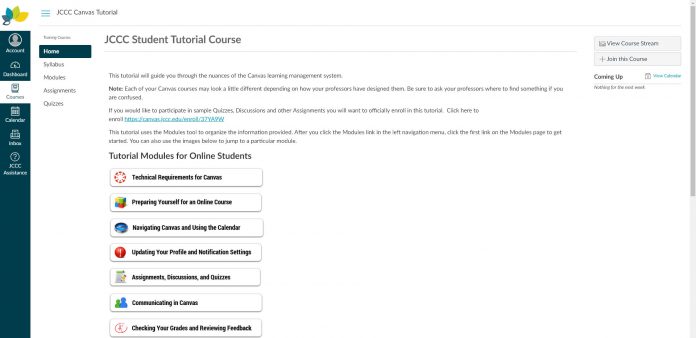Daniel Moreira
Managing editor
Canvas officially replaced Desire2Learn (D2L) as the college’s learning system this fall.
Ed Lovitt, director of Educational Tech and Distance Learning, is one of the people involved with choosing the new system. Since the college’s contract with D2L was about to expire, Lovitt saw the need to change for a different online learning system.
“With Canvas, it was becoming pretty clear that a lot of other local universities and colleges were looking at it,” said Lovitt. “Canvas caught our attention, and though change is not always easy, the college decided to go to Canvas.”
For the past nine months, a few classes have already adopted the system. It served as a way to receive early feedback from students and professors, which helped Lovitt and his team on making their choice.
“We’ve been monitoring what kind of feedback, what kind of frustrations, and, surprisingly, it has been a very small number of complaints about [Canvas],” Lovitt said.
According to Lovitt, the main advantage Canvas has is the mobile app. Students can install the app and receive various sorts of notifications, such as when grades are posted or when an announcement happens. Other qualities are Canvas’ clean and customizable interface, its helpful calendar, the direct contact with tech support and an easy to navigate system.
One concern Lovitt had while choosing Canvas is its cloud hosting.
“D2L was hosted on our campus, at the Regnier Center. When we moved to Canvas, it would to Amazon Web Services, so it is out on the cloud. That was a concern we had, we no longer had control,” Lovitt said. “But, in the last year that we’ve had the system up, I think we’ve had a 99.97 percent uptime. We would love to have a 100 percent, but we understand that sometimes things happen.”
Rhonda Barlow, Mathematics Professor, is one of the many professors who are teaching Canvas to other faculty members. She was also part of the team who picked Canvas as the new online learning system. To Barlow, a few qualities were decisive to her vote.
“There is a product called ‘Turnitin’ that English faculty use for papers,” said Barlow. “It didn’t really work in D2L, and they wanted a system where they could use ‘Turnitin’ integrated as a plugin. That was really important to them.”
Barlow’s main concern with Canvas was its gradebook.
“I’ve had a very hard time setting up the gradebook. That’s what most of the training is about: how do I set up my gradebook?” Barlow said, referring to her teaching Canvas to other professors. “Building that gradebook is completely different [from D2L], and very difficult in Canvas.”
Pedro Rodriguez, student, used Canvas for most of his classes last semester and used the features Canvas provides.
“I really like the fact that they had a calendar there. For my English class, I could see when everything was due, I could just click on it and go straight to the assignment,” Rodriguez said. “I also like that you can email professors from there, and most professors replied it quickly.”
However, Rodriguez still had some complaints about the system.
“[Canvas] would be a lot simpler if it had less categories, or if it grouped the categories together,” Rodriguez said. “I also didn’t like that people can message you directly. I had a guy in my class just randomly message me. It was nothing offensive, but it was still sort of weird.”
Overall, Rodriguez adjusted to the new system quickly.
Rodriguez said, “Canvas was a very friendly system. I was a little bit scared for the transition, and at first it was a little bit hard to get used to it [with] all the passwords you have to put into it, but then it just got really simple and easy to use.”






















